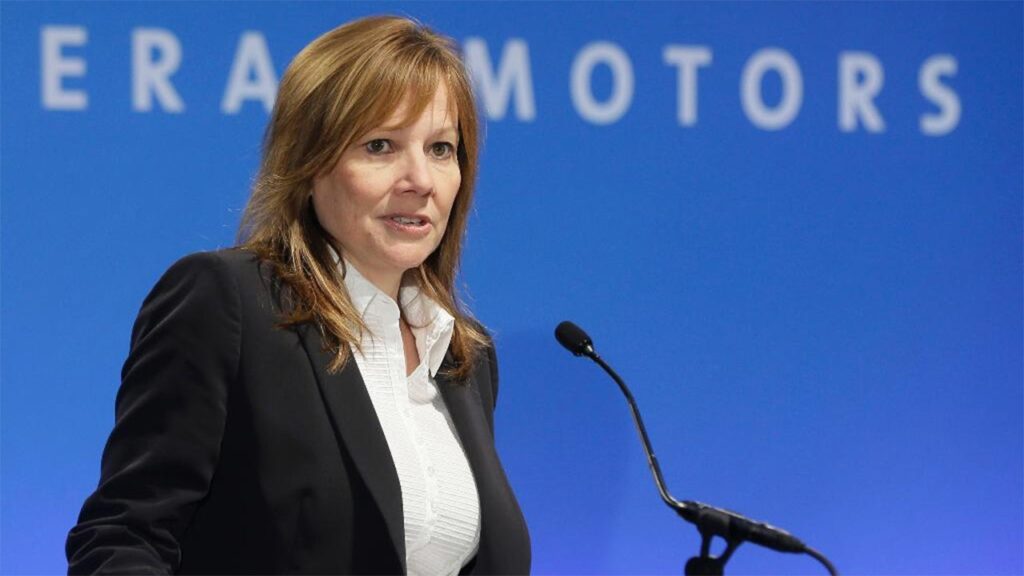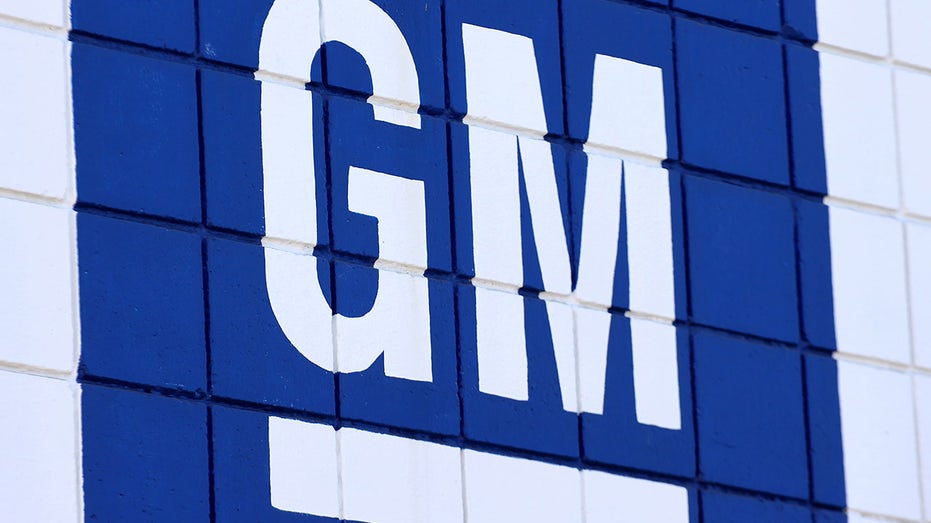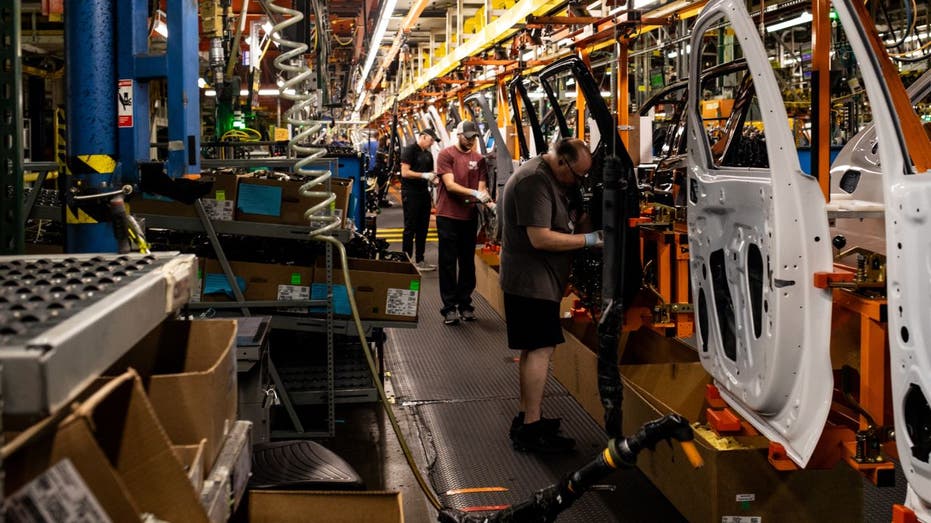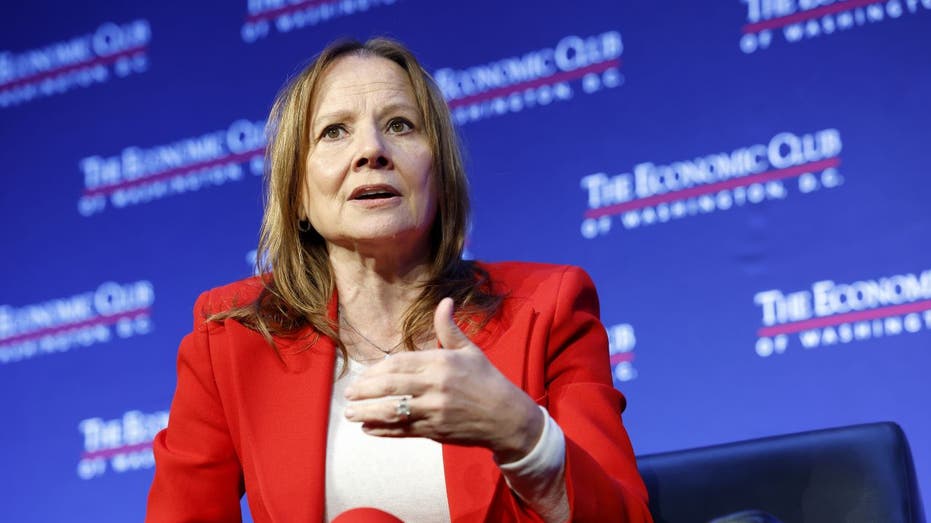
General Motors Chair and CEO Mary Barra discusses the impact of auto tariffs and building the business on The Claman Countdown.
General Motors CEO Mary Barra has publicly cozied up to the Trump administration in recent months, including promoting a major investment in the United States last week, but her tenure at the company has included several examples of the company shipping production and jobs overseas.
“I’m actually looking forward to working with the president and with the administration, because I think we can grow the importance of the auto industry and manufacturing, and so I think there’s a lot that we have in common,” Barra said about the incoming Trump administration in December 2024.
This month, GM announced that it is investing $4 billion in its U.S. plants over the next two years to boost the manufacturing of gas and electric vehicles in a move that was hailed by many on social media.
The announcement comes two years after GM had pledged $13 billion to U.S. plants over the next five years as part of a settlement to end a UAW strike. Two of the sites mentioned in 2023, the Orion Assembly plant and Spring Hill Manufacturing plant, are mentioned in the 2025 announcement.
AUTO PRICE INCREASES: IT’S MORE COMPLICATED THAN HIGHER TARIFFS

GM announced a major investment into the U.S. this year but has a history of focusing production overseas. (Getty Images / Getty Images)
A GM spokesperson told Fox Business after publication that the 2025 investment is a new investment.
Despite the investment and Barra’s recent willingness to work with the Trump administration, a Fox News Digital review found several examples of GM closing U.S. plants and becoming a fixture producing overseas.
GM has closed three U.S. plants since 2018, in Michigan, Ohio, and Baltimore, and converted a fourth to electric vehicles, Detroit News reported.
“Very disappointed with General Motors and their CEO, Mary Barra, for closing plants in Ohio, Michigan and Maryland,” Trump posted on social media at the time. “Nothing being closed in Mexico & China. The U.S. saved General Motors, and this is the THANKS we get!”
In 2024, GM was described in a Mexico Business News report as the largest vehicle manufacturer in Mexico.
Additionally, in 2024, Bloomberg reported that GM imported more automobiles into the United States than any other car company, exceeding Japan’s Toyota Motor Corp. The report said that nearly half of all the vehicles GM sold in the United States last year were made overseas.
SECRET SERVICE RECEIVES 10 VEHICLES FOR AGENT TRAINING FROM GENERAL MOTORS

General Motors logo (Mario Tama/Getty Images / Getty Images)
Since 2015, the year after Barra took over, GM has dropped 12 points in the Kogod Auto Index, an American University tracker that ranks car manufacturers on how American their cars are.
“GM is just the latest of companies to play the America First card, while shipping jobs and production overseas,” a senior GOP operative told FOX Business. “President Trump has been the single greatest job creator this country has ever seen.”
Barra has publicly supported President Trump’s tariff agenda despite the company saying it would financially hurt them, which the Wall Street Journal said in an op-ed was a decision made in “hopes of preserving some influence with the White House and warding off worse policy harm.”
“This is a classic example of a big corporation cozying up to a political office holder to garner influence,” Heritage Foundation Chief Economist EJ Antoni told FOX Business. “Instead of making vehicles people actually want, for a price they can afford, with American labor and American materials, GM has failed on all four counts, all because it was banking on Democrats forcing consumers into EVs.”
Bloomberg reported earlier this year that Barra has “staked her legacy on EVs” and has chosen to “stay the course” on EV production rather than follow other carmakers who have shifted more production back to gas and hybrid.
In a letter to shareholders last month, Barra made a point of saying she is “grateful to President Trump for his support of the U.S. automotive industry.”
Antoni told FOX Business that GM will “need to do more than pay lip service to President Trump’s agenda if it wants to turn the corner from this misguided bet on EVs.”

Workers assemble vehicle doors at the General Motors assembly plant in Fort Wayne, Indiana, US, on Tuesday, April 9, 2024. (Photographer: Emily Elconin/Bloomberg via Getty Images / Getty Images)
“GM foolishly went all-in on the transition to electric vehicles, and that bet hasn’t paid out. When you look at political donations, GM and its affiliates have been giving much more money to Democrats, including Kamala Harris, than Republicans—another bet that hasn’t paid out,” Antoni continued.
“Not only was GM on the wrong side of politics, but on the wrong side of consumer preferences. Put simply, people don’t want the electric vehicles GM makes, at least not in the numbers they’ve been produced. The only way GM would’ve been able to push such cars on consumers would be if the government forced it. Without the strongarm of the state, however, GM stands to lose big time out on its wrongheaded bet that Democrats would shove the green new scam down everyone’s throats.”
The amount of GM’s UAW workers also appears to have shrunk since Barra took the helm from 73,000 employees in 2007 to just 45,000 in 2024.
GET FOX BUSINESS ON THE GO BY CLICKING HERE

Mary Barra, CEO of General Motors, speaks during an interview with David Rubenstein, the President of The Economic Club at the Ritz Carlton Hotel on Dec. 13, 2023 in Washington, DC. (Anna Moneymaker/Getty Images / Getty Images)
In a CNBC interview earlier this year, Barra responded to the allegation that she was “dancing around the question” of bringing more jobs into the United States.
“Are you going to bring plants back to the United States?” Barra was asked on CNBC’s “Squawk Box.”
“So we have a lot of plants,” Barra said. “We have more assembly plants in this country already. We have over 50 plants that are not only final assembly, but component plants and part distribution centers.”
“We’re going to leverage that footprint that we have because we have the ability to add capacity to many of those plants. So we can do this efficiently, and it’s going to allow us to do this more quickly than if we were going to start with a greenfield. So right now we’re going to leverage the assets that we have, and we’re working on plans. I don’t have anything specific other than what we’ve done in Fort Wayne already, but you’ll see more announcements coming from us of what we’re going to be doing to increasing production in this country, leveraging the strong manufacturing footprint we already have.”
After publication, a GM spokesperson told Fox Business that the company has invested $60 billion in the U.S. since 2020, before this latest investment.
“GM has demonstrated an ongoing commitment to build vehicles in the U.S and to support American jobs,” the spokesperson said.
“GM has a network of 50 U.S. manufacturing plants and parts facilities in 19 states, including 11 vehicle assembly plants. Nearly one million people in the U.S. depend on GM for their livelihood, including employees, suppliers, and dealers.”
 Latest World Breaking News Online News Portal
Latest World Breaking News Online News Portal






